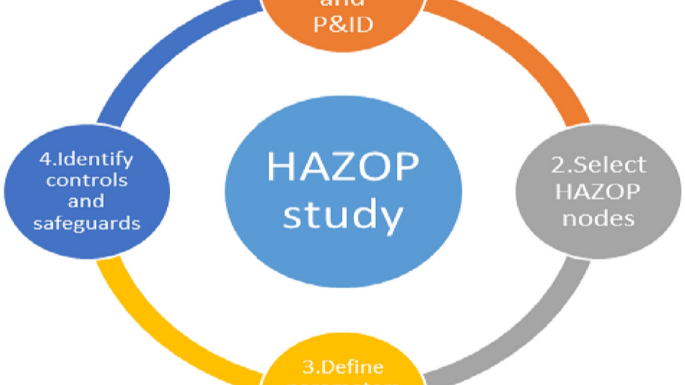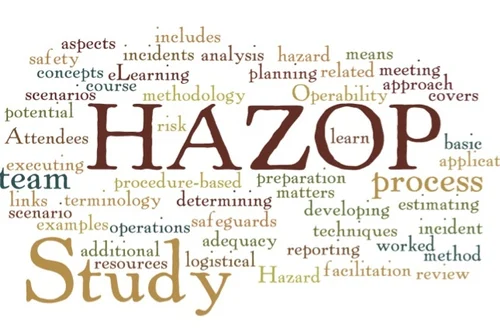The Role of HAZOP Study in Process Safety Management
The Role of HAZOP Study in Process Safety Management

Understanding the HAZOP Study
The HAZOP Study (Hazard and Operability Study) is a structured methodology used to identify and mitigate potential hazards in industrial processes. This approach is widely recognized as a best practice for ensuring operational safety in chemical, oil and gas, pharmaceutical, and manufacturing industries. By systematically analyzing process deviations, it helps in identifying risks that could compromise safety and efficiency.
A HAZOP Study focuses on breaking down a process into individual elements, evaluating possible deviations from design intent, and assessing their potential consequences. Teams comprising engineers, safety specialists, and operations personnel conduct these studies to detect weak points and suggest necessary corrective measures.
How HAZOP Contributes to Process Safety Management
Process Safety Management (PSM) is a systematic approach aimed at preventing hazardous chemical releases and ensuring the safe operation of industrial facilities. A HAZOP Study plays a critical role in PSM by:
- Identifying potential hazards before they escalate into incidents.
- Assessing deviations in process parameters such as pressure, temperature, and flow rate.
- Improving system reliability through early detection of risks.
- Enhancing compliance with regulatory standards like OSHA and ISO.
A successful HAZOP Study enhances the overall effectiveness of Process Safety Management, ensuring proactive risk control measures are in place.
Explore Process Safety Management
Key Steps in Conducting a HAZOP Study
The HAZOP methodology follows a structured process involving multiple stages:
1. Defining the Study Scope
The first step involves determining the boundaries of the HAZOP Study, selecting the system or process to be analyzed, and gathering necessary design and operational documents.
2. Forming the HAZOP Team
A multidisciplinary team is formed, comprising:
- Process engineers with in-depth knowledge of system design.
- Operators who handle daily plant operations.
- Safety professionals specializing in risk assessment.
- Maintenance personnel familiar with system vulnerabilities.
3. Breaking Down the Process into Nodes
The process is divided into smaller sections, called nodes, where operational changes are evaluated for safety implications.
4. Applying Guide Words
Standard guide words such as “More,” “Less,” “No,” “Reverse,” and “As Well As” are used to analyze possible deviations in process parameters.
5. Identifying Potential Hazards and Consequences
Each deviation is assessed for its impact on safety, efficiency, and environmental compliance.
6. Recommending Mitigation Measures
For every identified risk, the team suggests preventive actions like equipment modifications, procedural changes, or additional safety controls.
7. Documenting Findings and Implementing Changes
A detailed report is prepared, outlining identified risks, recommended actions, and follow-up measures.
The Importance of Safety Audits in HAZOP Studies
A Safety Audit is an essential part of maintaining operational integrity in industrial processes. It involves evaluating safety policies, procedures, and compliance with regulatory standards. By integrating HAZOP findings into Safety Audits, organizations can:
- Identify compliance gaps and address potential regulatory violations.
- Ensure corrective actions from HAZOP reviews are effectively implemented.
- Enhance workplace safety by proactively eliminating hazards.
A robust Safety Audit ensures that recommendations from HAZOP Studies translate into long-term safety improvements.
The Role of Fire Audits in Process Safety
Fire hazards pose a major risk in industries handling flammable materials. A Fire Audit assesses the potential fire risks within an organization and provides recommendations to enhance fire prevention and control measures.
A Fire Audit evaluates:
- Fire detection and suppression systems.
- Compliance with fire safety regulations.
- Employee training on emergency response.
- Effectiveness of fire escape routes and evacuation plans.
When combined with HAZOP Studies, Fire Audits help prevent catastrophic incidents caused by uncontrolled process deviations.
The Role of a Safety Consultant in Implementing HAZOP Recommendations
A Safety Consultant plays a crucial role in translating HAZOP findings into actionable improvements. These professionals:
- Conduct risk assessments based on HAZOP findings.
- Develop customized safety training programs for employees.
- Assist in implementing engineering controls to mitigate risks.
- Ensure regulatory compliance by aligning processes with safety standards.
Having an expert Safety Consultant onboard ensures that the safety measures identified in a HAZOP Study are effectively put into practice.
Conclusion
The HAZOP Study is an integral part of Process Safety Management, helping organizations detect and mitigate potential hazards before they lead to incidents. When combined with Safety Audits, Fire Audits, and expert consultation, it ensures a comprehensive approach to workplace safety.
By integrating HAZOP methodologies with regular safety evaluations and expert guidance, industries can maintain a safer, more efficient, and compliant working environment.







